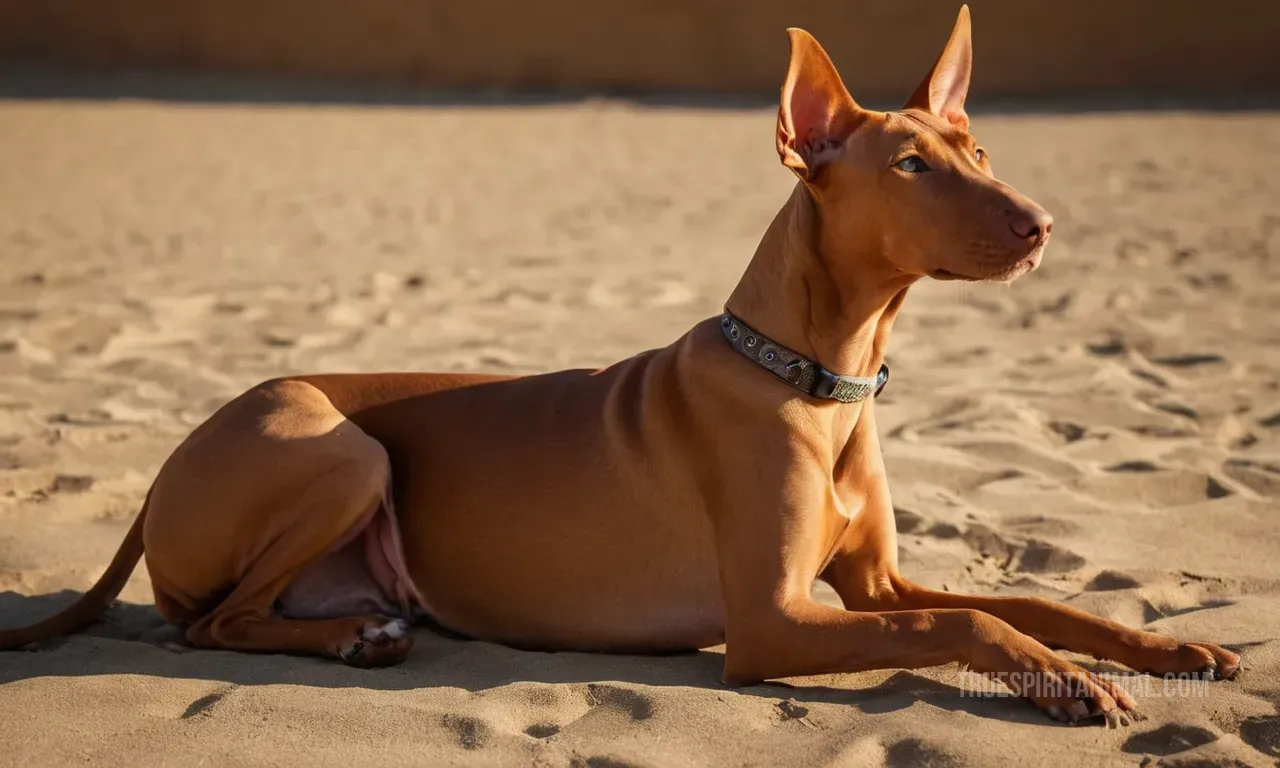Pharaoh Hound Symbolism and Meaning

The Pharaoh Hound is a breed of dog that has been around for thousands of years, with its origins tracing back to ancient Egypt. This elegant and graceful sighthound is known for its speed, agility, and intelligence. But beyond these physical attributes, the Pharaoh Hound holds deep symbolism and meaning in various aspects of life. In this article, we will explore the symbolic significance of this breed, delving into their history, characteristics, and cultural impact.
History and Origins
The Pharaoh Hound, also known as the Egyptian Sighthound or Keleketi, has been around since 2900 BCE. They were bred by the ancient Egyptians for hunting purposes, primarily used to chase down game such as gazelles and hares in the desert landscapes of Egypt. Their name is derived from their association with Pharaohs, who were believed to be the protectors of these dogs due to their loyalty and prowess in hunting. The breed was considered sacred by the Egyptians and often depicted in hieroglyphics alongside royalty. They were also associated with the god Anubis, the god of death and mummification, which adds another layer of mystique to their symbolism.
Physical Characteristics
The Pharaoh Hound is a large breed known for its sleek body, long legs, and lean build. Their coat is short-haired and smooth, usually in shades of red or reddish-brown with black markings. They have a distinctive feathered tail that resembles the wingspan of a falcon – another symbol of speed and agility. This unique appearance has made them stand out throughout history, adding to their mystique. Their eyes are almond-shaped and expressive, often described as wise or intelligent. These dogs are known for their keen sense of sight, which is why they’re called sighthounds – they rely on their vision rather than scent to hunt prey.
Symbolism in Egyptian Culture
In ancient Egypt, the Pharaoh Hound was a symbol of nobility and royalty. They were often depicted alongside pharaohs and other high-ranking officials, signifying power and authority. Their association with Anubis, the god of death, also gave them an air of mystery and mysticism. In Egyptian mythology, they were seen as guardians of the afterlife, protecting the souls of the deceased during their journey to the underworld. This connection to the afterlife made them symbols of protection and guidance.
Symbolism in Modern Times
Today, the Pharaoh Hound is still revered for its speed and agility. They’re often used in dog sports like lure coursing and field trials due to their natural hunting instincts. Their presence at these events symbolizes strength, determination, and athleticism. In popular culture, they’ve appeared in movies and literature, representing loyalty and intelligence.
Cultural Impact
The Pharaoh Hound has been featured in various forms of media, from books like “The Adventures of Tintin” to films like “The Mummy Returns.” Their presence often signifies speed, grace, and intelligence. They’re also used as mascots for sports teams, symbolizing strength and agility.
Symbolism in Dog Shows
In dog shows, they represent elegance and athleticism. Their regal bearing and hunting prowess make them stand out among other breeds. In competitions, they embody grace under pressure and determination to win.
Pharaoh Hound as a Pet
As pets, they’re symbols of loyalty and companionship. They form strong bonds with their owners, reflecting loyalty and trustworthiness. Their unique appearance makes them conversation starters at events or gatherings.
Symbolism in Art
Their depiction in art often represents speed and agility. Their presence adds a touch of elegance to paintings and sculptures, showcasing their beauty and strength.
In conclusion, the Pharaoh Hound carries significant symbolism across different aspects of life – from history to modern times. From ancient Egypt to contemporary culture, they’ve been symbols of nobility, speed, intelligence, loyalty, and grace. Their unique appearance adds a touch of mystique wherever they go. Whether in art or real life, these dogs hold deep meanings that go beyond their physical attributes.





